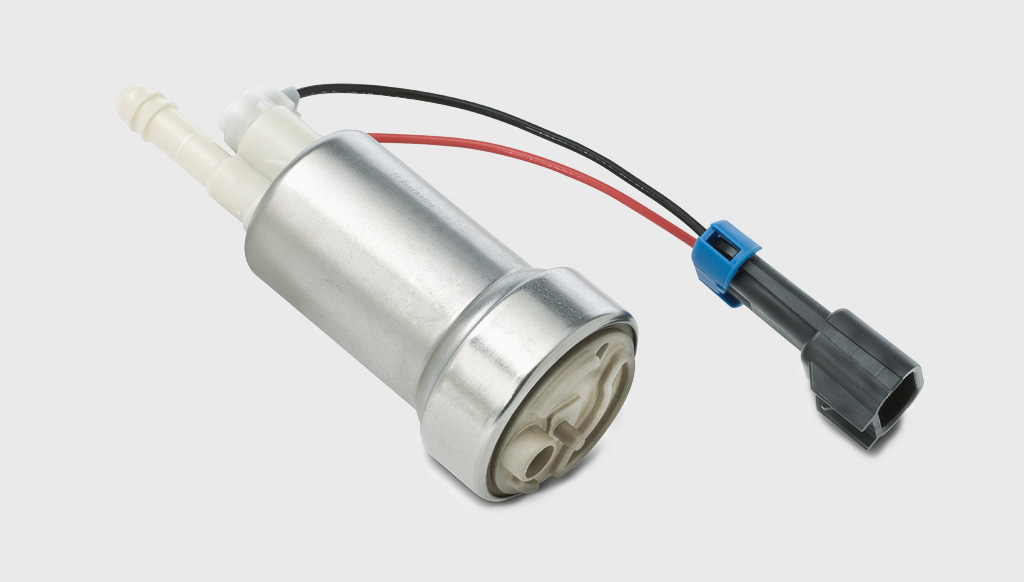Making Horsepower: Upgrading to a High-Performance Fuel Pump to Handle Increased Performance Demands
When you modify a vehicle to produce more power, additional fuel is required. Internal combustion engines need a mixture of fuel and air to operate. The higher the demands on the engine, the greater the fuel flow which, in some cases, may exceed the capability of the original equipment or factory fuel pump. This is especially true when it comes to race car demands where the driver needs every last ounce of power be coaxed from an engine.
The goal of a high-performance or racing fuel system is to always have enough fuel going to the engine to meet the demand placed on it. An ultimate example of a high-performance fuel system is found in endurance racing where engines run at high rpm (revolutions per minute) for up to 24 hours at a time or more. Not enough fuel, even for short periods of time, can produce a lean fuel-to-air mixture which can be detrimental to engine parts–even the entire engine itself. Essentially, the wrong fuel pump can starve an engine of the fuel it needs to operate at peak performance.
Other forms of motorsports place more extreme g-loads on race vehicles forcing fuel away from the fuel pickup starving the engine. High g-forces (gravitational forces) on the car or truck require fuel pumps that can handle the loads of pulling fuel away from the fuel pickup in the fuel tank or fuel cell. In a dragster, for example, the g-forces are in a straight line of acceleration, while in other vehicles, they may be side-to-side, or lateral and even vertical when it comes to off-road race vehicles. Many high performance street cars can produce or “pull” one-g laterally during cornering.
Both professional race programs and recreational performance enthusiasts can benefit from a high-performance fuel pump upgrade. It is an often forgotten factor in the overall performance equation that will be well worth the effort in the long run.
High-performance street vehicles with modified powertrains may also require a fuel pump upgrade. Even stop and go traffic driving in the city can be hard on a high-performance engine and fuel system. Depending on the region the vehicle is operated in, conditions like extreme heat, cold, and altitude become factors. The goal with a performance fuel system is to always provide proper fuel pressure and flow to the engine. Anything less can not only hurt performance, but sometimes the engine too.
TI Automotive offers a complete line of both in-tank and in-line automotive fuel pumps to exceed the demand of every high-performance application with the durability to deliver original equipment-like performance. Flow charts and fuel pressure resources can be found online here.
ABOUT TI AUTOMOTIVE
Fluid thinking™ shapes the mindset of TI Automotive. Global automotive manufacturers turn to TI Automotive to develop and produce industry leading automotive fluid systems technology. Two-thirds of the world’s vehicles contain technology from TI Automotive. With 28,000 employees at more than 118 locations in 28 countries, our strength lies in our ability to creatively meet and exceed the increasing fuel economy and emissions regulations of tomorrow’s auto industry.
